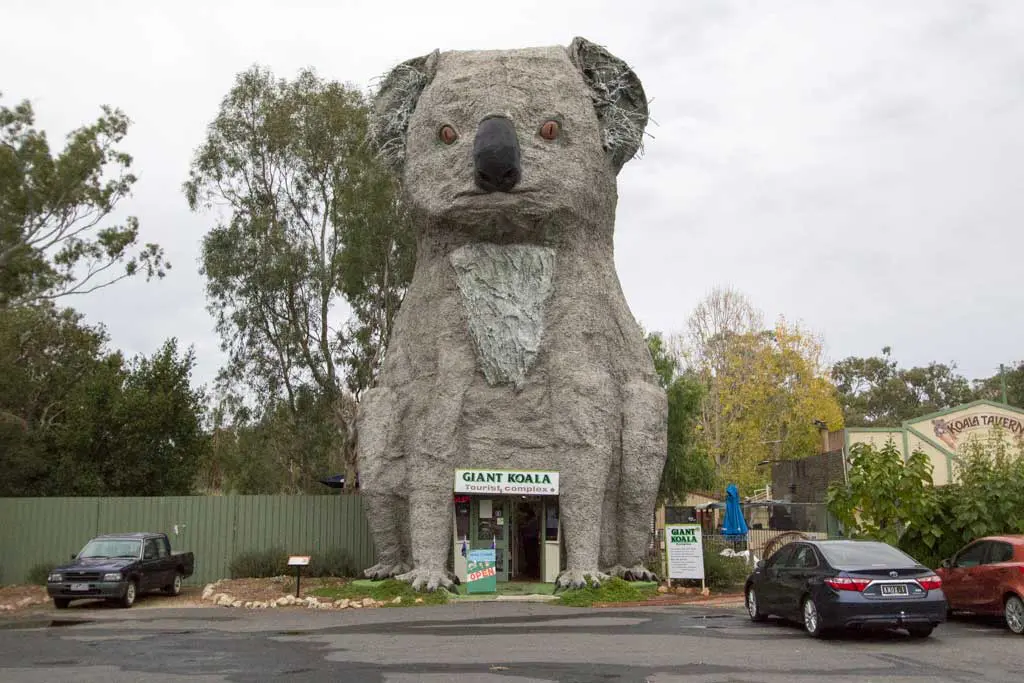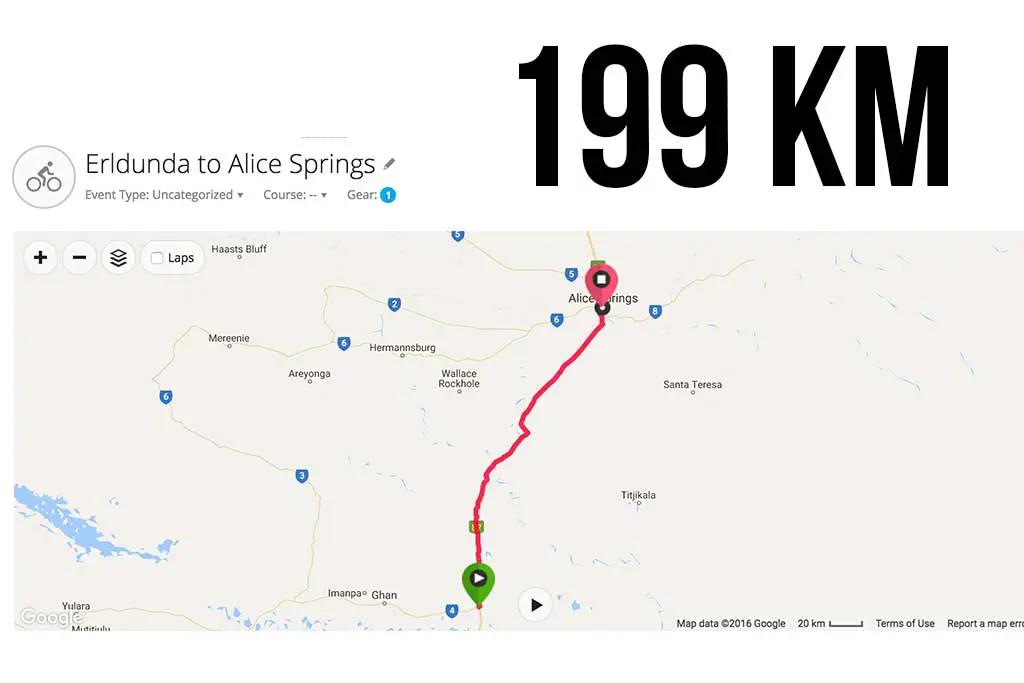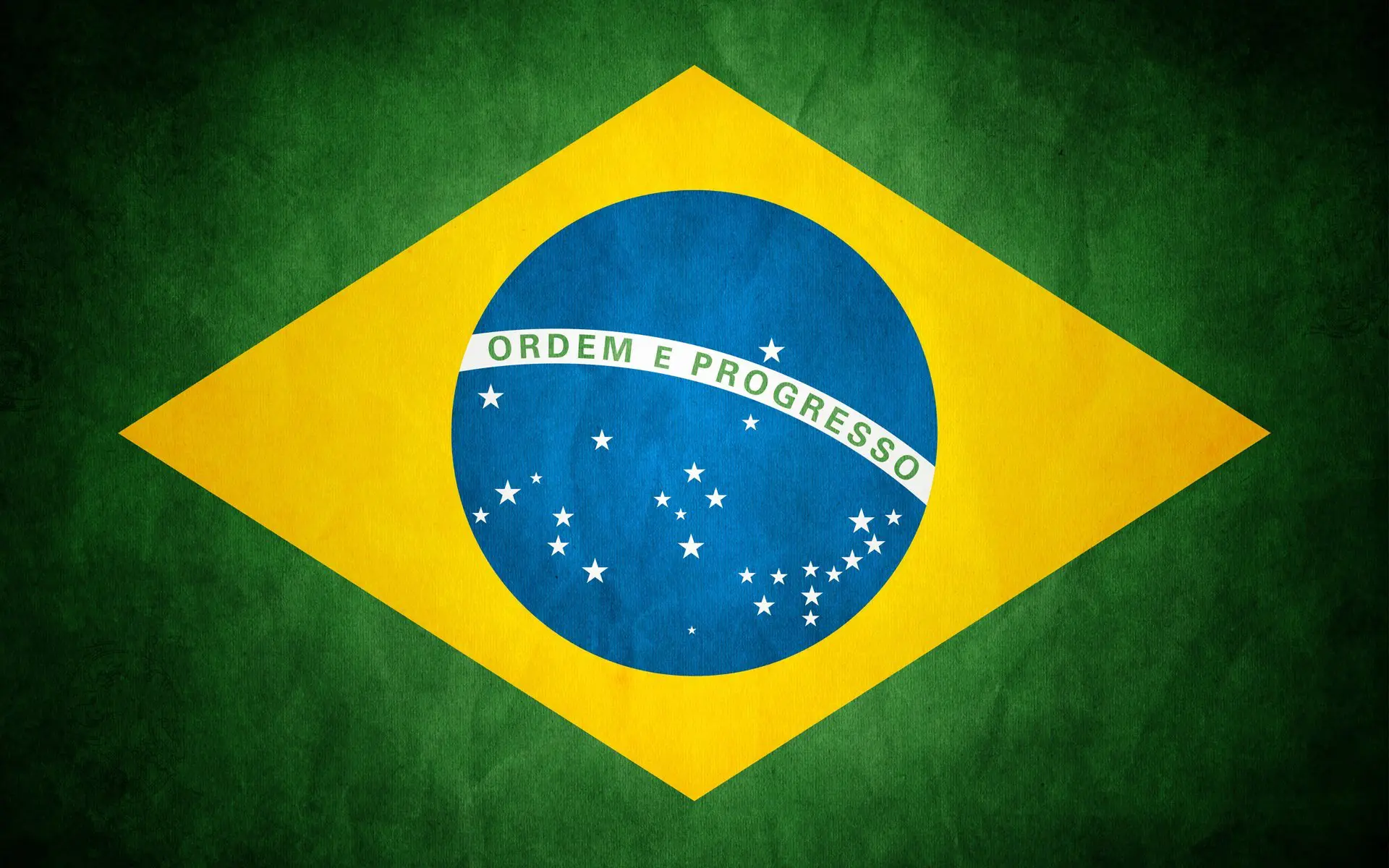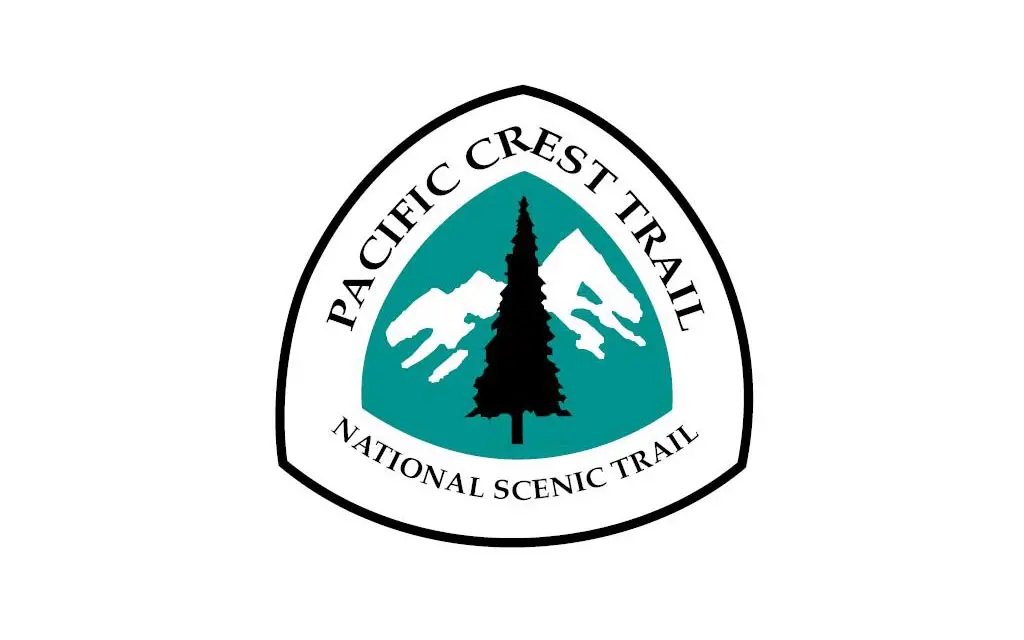A Beginner’s Guide To Australia
Down under! The country that’s also a continent! The gateway to New Zealand! The place with a bunch of stuff that can kill you! Kangaroo Island! Oz!
Yes, Australia and all of its names can evoke quite a few stereotypes, and I’m here to tell you that they’re all true.
With an area rivaling that of the Continental United States and a population just larger than that of Southern California, Australia is quite spread out. But that doesn’t mean there isn’t plenty to see here (spoiler: a lot of those things are rocks).
Australia Facts

- Capital: Canberra
- Largest city: Sydney (4,921,000)
- Language: English
- Area: 2,969,907 mi² / 7,692,024 km² (6th)
- Currency: Australian dollar (AUD)
- Population: 24,100,900
- Time Zone: UTC+8 to +11.5
- Calling Code: +61
- Drives On: Left
- Drinking Age: 18
- Drinking In Public: Illegal
- Drinking Tap Water: Okay
- Flushing Toilet Paper: Okay
- Vaccinations Required: CDC
- Credit Cards: Widely accepted
- Tipping: Not expected
- Emergency Number: 000
- Outlets: Plug Type I
- Visa Requirements: External Link!
Australia Basics
- LANGUAGE | Although you may be confused at first by all the “g’day, mates” and “how you goings,” English is the official language in Australia! It’s a sort of hybrid English that came about when British and American English had a baby that grew up and got stuck in its rebellious teenage years; you can see traces of its parents, but it has decided to do things its own way. So don’t whinge should someone invite you over for a stubby during the arvo league match.
- GETTING AROUND | Australia doesn’t have the greatest intercity infrastructure. That being said, the country can be crossed via bus or rail (or car if you be so bold). However, flights may be the most common way to get around the country. Jetstar, a subsidiary of Qantas, offers cheap flights within the country (even to places like Alice Springs and Uluru – yes, there’s an airport at Uluru).
- GEOGRAPHY | The sixth largest country in the world, Australia is huge. However, nearly 60% of the country’s 23 million inhabitants are concentrated in just four cities: Sydney, Melbourne, Brisbane, and Perth. All the major cities, with the exception of the capital city of Canberra, are located along the coast (primarily the east and southeast coasts). The Outback, which constitutes the vast majority of Australia’s landmass is sparsely populated and home to only a few paved highways. The country’s highest point, Mount Kosciuszko (7,310 ft / 2,228 m) is in Kosciuszko National Park in the southeast. The weather typically get colder and drier as you head south, and stays hot and humid in the tropical northern regions.
- THINGS TO DO | The beaches and oceans are probably the biggest draws for tourists visiting Australia, but despite its massive coastline, there’s plenty more to be explored. Uluru (Ayer’s Rock) is one of the country’s top destinations and one of the most remote in the world. Tasmania, basically the Alaska of Australia, has 45% of its area in reserves, national parks, and World Heritage Sites. You can head to Port Douglas, the gateway to the Great Barrier Reef, in Northern Queensland for diving. The Blue Mountains just outside Sydney offers hiking, climbing, and abseiling. There are even ski resorts in Australia (although you’re better off not visiting should winter sports are your primary motivation for doing so).
- WHEN TO GO | I remind you that Australia resides in the Southern Hemisphere – so the seasons you’re probably used to are reversed here. If you’re looking to hit the height of summer, then you’re looking at a December to February window (although Queensland beaches are ripe for swimming all year). If you are keen on visiting the Outback, then you might want to visit between June and August (unless you’re a fan of temperatures approaching 120°F / 50°C). The wet season can be up to six months depending on where in the country you are, and the farther north you go the more humidity you’ll encounter.
Australia States
Typically I do a bit on “what to eat” here, but Australia, as is the case with many English-speaking countries, does not offer the widest range of specialized “local dishes”. Instead, you can find food from all over the world (but yes, you can also buy and eat kangaroo). So in lieu of trying to come up with what you should eat in Australia, I thought I would talk a bit about each of the country’s seven states (and capital district).
- QUEENSLAND | Home to the Great Barrier Reef, Cairns, the Gold Coast, and the capital of Brisbane, Queensland (in Australia’s northeast) is warm year-round and is a top destination among people looking to take full advantage of Australia’s beaches. Diving, surfing, and whale watching (isn’t it weird that we just watch whales?), are big draws for people to visit here, but you can also find the Daintree Rainforest – the largest continuous area of tropical rainforest in Australia (460 mi² / 1,200 km²).
- NEW SOUTH WALES | In the southeast you’ll find New South Wales, the most populated Australian state. Here we find Australia’s largest and most iconic city, Sydney, along with Royal National Park (the country’s first), the Blue Mountains, and the country’s highest point, Mount Kosciuszko. In the north, you can find Byron Bay – the most eastern point of mainland Australia, and in the south, you can find the Australian Capital Territory (which is completely surrounded by New South Wales).
- VICTORIA | Melbourne is the capital and largest city in southeastern Victoria, and it’s here that you can find the biggest fans of the AFL, or Australian Football League (and no, this is neither soccer nor is it American football). Victoria may be the smallest state on the Australian mainland, but it’s one of the most popular destinations. It’s in Victoria that you’ll find the Great Ocean Road, the Twelve Apostles, and numerous wine regions such as the Yarra Valley and the Mornington Peninsula.
- TASMANIA | Tasmania (or Tassie) is a bit like Australia’s Alaska – a forgotten state that few people have been to but that everyone regards as being beautiful (and that has spectacular trekking). Located 150 mi / 240 km south of mainland Australia, Tasmania is home to some of the world most famous treks, including the Overland Track. It’s covered in national parks and protected reserves and is almost more like New Zealand’s little brother than part of Australia (but don’t tell Australia that).
- SOUTH AUSTRALIA | South Australia is the driest of Australia’s states (in terms of yearly precipitation) and its capital city Adelaide is where many people begin their journies into the Outback. In the west, you’ll find the Nullarbor Plain (home to the longest, straightest road in the world at 90.5 mi / 145.6 km). Heading towards the center of South Australia there’s the opal mining town of Coober Pedy and then basically just desert until you hit the Northern Territory border (followed by more desert). Something South Australia does have a lot of? Awesome breweries (check out Pirate Life, Big Shed, and Vale).
- NORTHERN TERRITORY | The Northern Territory is the third largest of Australia’s states/territories, but it is the least populated (it has half the population of Tasmania). It’s two largest cities are Alice Springs and the capital of Darwin, and it’s home to Uluru – one of Australia’s icons (after kangaroos and koalas, of course). Its southern half is dominated by the Outback, but the northern third of the state quickly transitions into hot and sweaty tropics (filled with crocodiles). Awesome places to check out in the Top End are Nitmiluk National Park, Kakadu National Park, and Litchfield National Park.
- WEST AUSTRALIA | Western Australia is quite literally the wild west of the country. Dominating nearly half the landmass of mainland Australia, the geographic reach of the state is enormous. It’s two most well-known cities are probably the capital, Perth, in the south (often referred to as “the most remote city in the world”) and Broome in the north. Western Australia (or “W/A” for short) is also home to the Margaret River wine region and the Kimberley – wilderness-filled region covering the north of the state. It may be intimidating to head all the way the other side of Australia, but I’ve never met anyone who didn’t love it over here.
- CANBERRA | Canberra is Australia’s capital city and it operates within the autonomous Australian Capital Territory (which is encircled by New South Wales). I have not been to Canberra, but reports from those who have typically include phrases such as “pretty boring” or “lots of parks”. Apparently, it’s a beautiful city filled with interesting museums and galleries – just not much to do there, I suppose (will have to visit and report back to you on this front – input is welcome).
Australia Tips & Tricks
- THE OUTBACK | The Outback doesn’t have defined boundaries, but it can typically be described as anywhere outside major city centers – particularly as you move towards the center of the country. It’s what a lot of people imagine Australia is and stands as a stark contrast to Australia’s other image – that of beaches and kangaroo feeding. Temperatures in the Outback can reach up to 50°C (120F) on summer days and drop to below freezing during winter nights. It’s also filled with flies. Definitely not a place you should ever ride a bicycle across.
- KILLER ANIMALS | Yes, as you may have heard, Australia is host to a shockingly high number of venomous or otherwise murderous organisms. However, the whereabouts of said death bringers are largely known and most of the people who fall victim to the country’s wildlife are generally doing something somewhere they should not be doing things (like swimming where there are signs posted about crocodiles).
- WIFI | The state of Australia’s internet is bad enough to constitute a national shame. Free and open wifi networks do exist but don’t expect to find them everywhere (especially if you’re outside a major city). Cellular data is quite fast (typically quicker than home installations), but the price per gigabyte is quite expensive. Most on Australian internet here.
- ALCOHOL | Alcohol in Australia is expensive (both in stores and at bars). Wine is the least expensive beverage you will find but expect a six pack of craft beer to cost you somewhere around $25 AUD. Liquor isn’t outrageously priced, but is definitely on the more expensive side. Many restaurants in Australia are licensed for BYO (bring your own) alcohol (some places charge something like $2 per person if you choose to do this).
- GAMBLING | Gambling in Australia is legal and it’s everywhere. There may be only one casino in every Australian state, but that doesn’t stop hotels and bars from filling parlors with sports betting and pokies (slot machines). It’s one of those things that’s everywhere, but that you don’t hear spoken about too often. Protip: the casinos are open 24 hours if you need a place to spend the night (but don’t try sleeping anywhere).
- SPORTS | Australia appears to be undecided on its favorite sports as both the Australian Football League (AFL) and rugby (which is further broken down into both Rugby League and Rugby Union) are big deals depending on which state you’re in (Victoria = AFL, NSW/Queensland = Rugby). What Americans call ‘soccer’, Australians also call soccer. What Americans call ‘football’, Australians call ‘gridiron’. And what Australians call ‘football’ (AFL), Americans call ‘that game that looks like rugby?’.
- ABORIGINAL AUSTRALIA | Australia’s relationship with Aboriginal Australians (the indigenous peoples of Australia) is complicated to say the least. Things are far from “sorted” and there’s a lot of sensitivity (and insensitivity) regarding the topic. If you can have a peaceful and educated discussion with someone about Aboriginal Australia, then I encourage you to do so. Just be sure to pick your company wisely (Australia can be an incredibly racist place).














